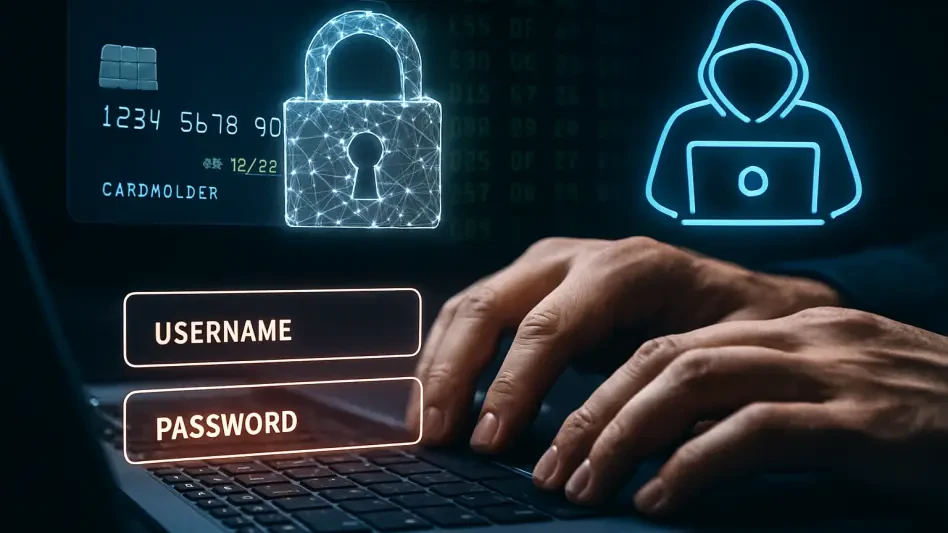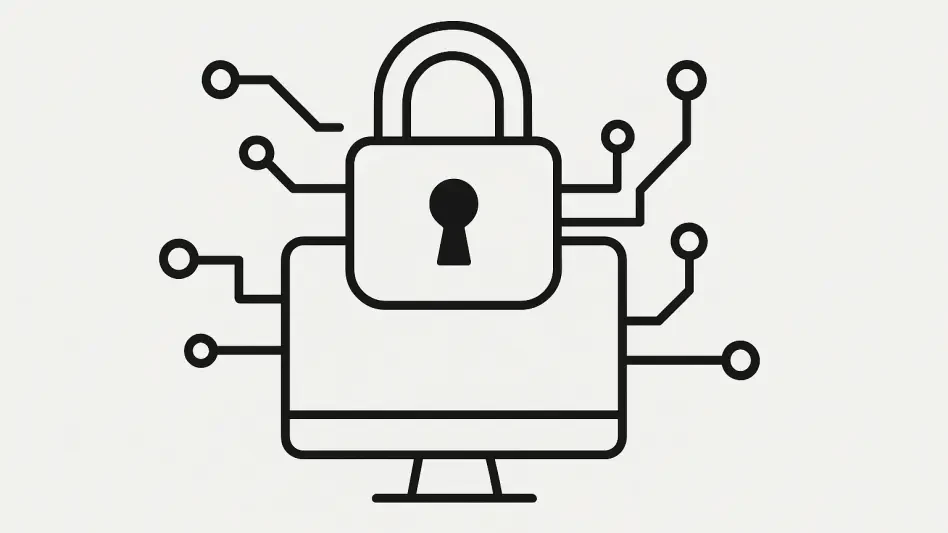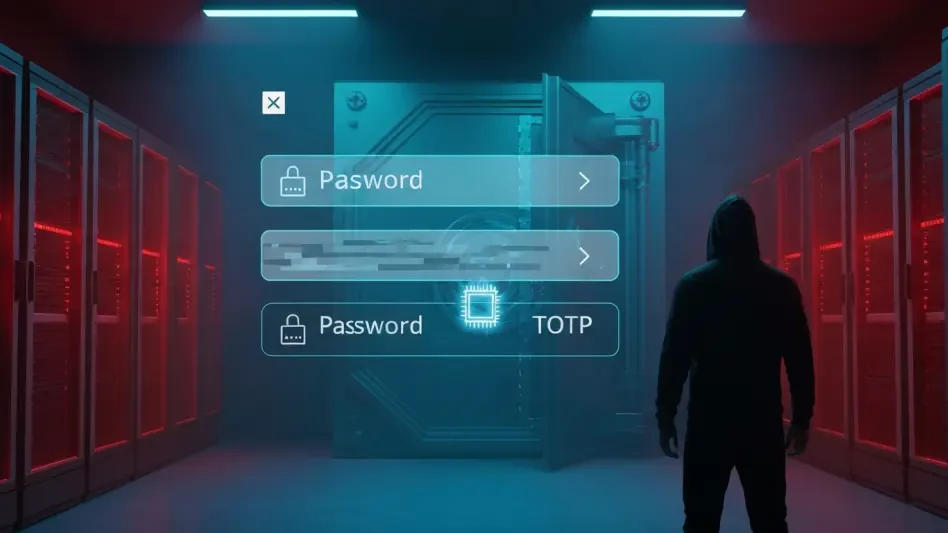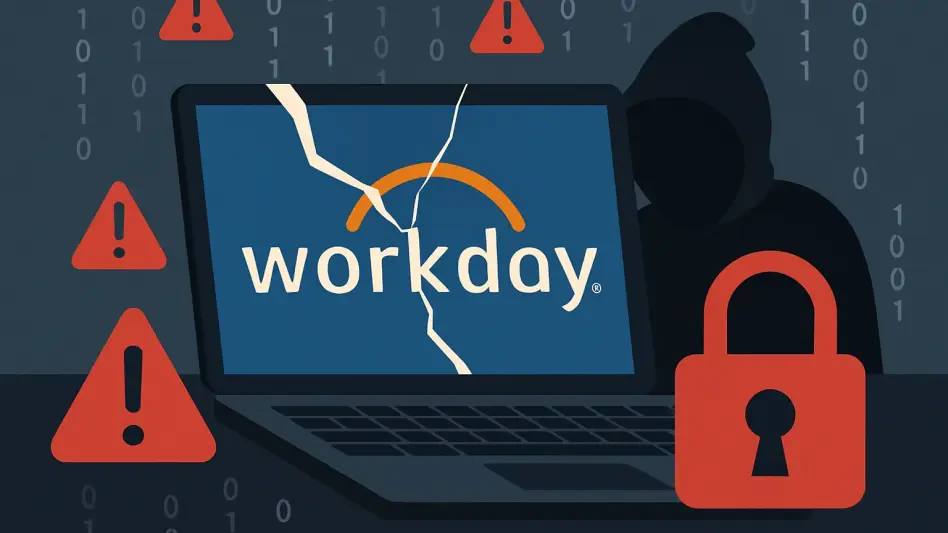Imagine a scenario where a single, seemingly harmless piece of information unlocks the door to a vast digital treasure trove, granting access to personal accounts, corporate systems, and sensitive data with alarming ease. This is the reality of stolen credentials, a tool so deceptively simple yet devastatingly effective that it remains the preferred choice for cybercriminals worldwide. Often compared to everyday items like duct tape for their versatility and reliability, stolen usernames and passwords continue to dominate the landscape of cybercrime, even as advanced threats like AI-driven attacks and deepfakes emerge. Despite significant strides in cybersecurity technology, the persistence of passwords as a primary authentication method creates vulnerabilities that threat actors exploit relentlessly. This article delves into the reasons behind the enduring appeal of stolen credentials, exploring the interplay of human behavior, technological inertia, and the accessibility of hacking tools that keep this method at the forefront of digital crime.
The Simplicity of Passwords as a Double-Edged Sword
The enduring reliance on passwords as a fundamental security measure stems from their universal familiarity and ease of implementation, a factor that benefits both users and developers alike. Passwords require no specialized knowledge to use or integrate into systems, making them a default choice across personal and professional platforms. For individuals, typing a combination of characters is a straightforward process, while developers find passwords easy to code into applications compared to more complex alternatives like biometric authentication or passkeys. However, this simplicity is precisely what makes them a prime target for cybercriminals. The lack of friction in their use often leads to complacency, with many users opting for convenience over security by creating easily guessable passwords or failing to update them regularly. This inherent accessibility, while user-friendly, opens a wide window of opportunity for hackers who can exploit these weaknesses with minimal effort, perpetuating the cycle of credential theft.
Another critical aspect of password simplicity is the resistance to adopting more secure alternatives, driven by both user behavior and systemic challenges. Technologies like two-factor authentication (2FA) or multi-factor authentication (MFA) offer significant protection against unauthorized access, yet their uptake remains limited due to perceived inconvenience. Users often balk at the extra steps required, such as entering a code sent to a mobile device, viewing them as barriers to quick access. Meanwhile, organizations and developers hesitate to enforce these measures universally, prioritizing user experience over stringent security protocols. This reluctance creates a gap that cybercriminals readily exploit, as stolen credentials often grant direct entry without triggering additional verification. The simplicity of passwords, therefore, not only sustains their widespread use but also ensures they remain a vulnerable link in the security chain, easily broken by determined attackers armed with basic tools and stolen data.
Accessibility and Effectiveness of Stolen Credentials
The sheer availability of stolen credentials on illicit markets makes them an irresistible tool for cybercriminals, lowering the barrier to entry for even novice hackers. Databases known as “combolists,” which contain millions of usernames and passwords, are sold cheaply or shared freely across dark web forums and messaging platforms like Telegram. These lists are often compiled from past data breaches, phishing campaigns, or malware infections, providing a ready-made arsenal for credential stuffing attacks. The ease of acquiring such data means that attackers can test stolen credentials against multiple platforms with automated scripts, increasing their chances of success without requiring advanced technical skills. This accessibility transforms stolen credentials into a scalable and cost-effective method of breaching systems, far outpacing the complexity and resource demands of other hacking techniques.
Beyond availability, the effectiveness of stolen credentials lies in their ability to exploit human tendencies and inconsistent security practices across digital ecosystems. A significant number of users reuse passwords across different accounts, a habit that amplifies the damage of a single breach. Once a credential is compromised, it can unlock access to email, banking, or workplace systems, often bypassing additional safeguards if MFA is not enforced. Even when security measures are in place, inconsistent adoption across organizations leaves gaps for exploitation. Cybercriminals capitalize on this predictability, knowing that a successful login attempt can yield valuable data or serve as a foothold for broader network infiltration. The combination of widespread reuse and spotty implementation of advanced protections ensures that stolen credentials remain a highly effective vector for unauthorized access, delivering results with minimal investment of time or expertise.
Human Behavior and Resistance to Change
Human behavior plays a pivotal role in sustaining the vulnerability of stolen credentials, as ingrained habits and reluctance to adapt undermine even the best security tools. Despite years of warnings from cybersecurity experts, many individuals continue to reuse passwords across multiple services, driven by the difficulty of remembering unique combinations for each account. This practice creates a domino effect, where a breach in one less-secure platform can compromise accounts on more critical systems. Additionally, the psychological barrier to adopting new security habits, such as using password managers or enabling MFA, often stems from a lack of awareness or a belief that cyber threats are someone else’s problem. These behavioral patterns provide cybercriminals with a steady stream of exploitable credentials, reinforcing the appeal of this attack method over more sophisticated alternatives.
Compounding the issue is the cultural and organizational resistance to enforcing stricter security measures, which further entrenches the reliance on vulnerable authentication methods. Many companies hesitate to mandate MFA or passwordless solutions like passkeys, fearing backlash from users or employees who prioritize convenience over safety. This hesitation is often mirrored at the individual level, where the extra steps of advanced authentication are seen as unnecessary hurdles. Even when education campaigns highlight the risks of poor password hygiene, changing ingrained behaviors proves to be a slow and challenging process. Cybercriminals exploit this inertia, banking on the likelihood that a significant portion of users and organizations will stick to outdated practices. Until a broader shift in mindset occurs, stolen credentials will continue to serve as a reliable entry point for attackers, capitalizing on the gap between available solutions and their practical adoption.
Strengthening the Basics for Future Security
Reflecting on the persistent challenge of stolen credentials, it becomes evident that addressing this issue requires a return to fundamental cybersecurity principles rather than solely chasing cutting-edge defenses. Past efforts revealed that while technology evolves rapidly, the human element often lags behind, leaving passwords as a glaring weak point. Historical data breaches demonstrated how easily compromised credentials could spiral into widespread damage, underscoring the need for consistent, basic protections. The lessons learned from these incidents point to a critical oversight: overlooking simple vulnerabilities in favor of complex threats allows cybercriminals to exploit the same old tricks with devastating success.
Looking ahead, the focus must shift toward actionable strategies that prioritize education and policy enforcement to mitigate the risks associated with stolen credentials. Organizations should consider making MFA a non-negotiable standard across all levels, ensuring that even if passwords are compromised, an additional barrier stands in the way of unauthorized access. Simultaneously, raising awareness about password hygiene through accessible, engaging campaigns can empower users to adopt better practices, such as using unique passwords or leveraging password managers. Developers and tech providers also bear responsibility to push for passwordless solutions, easing the transition with user-friendly designs. By addressing both technological and behavioral dimensions, the digital landscape can evolve into a more secure environment, reducing the allure of stolen credentials for cybercriminals and fortifying defenses against this enduring threat.








